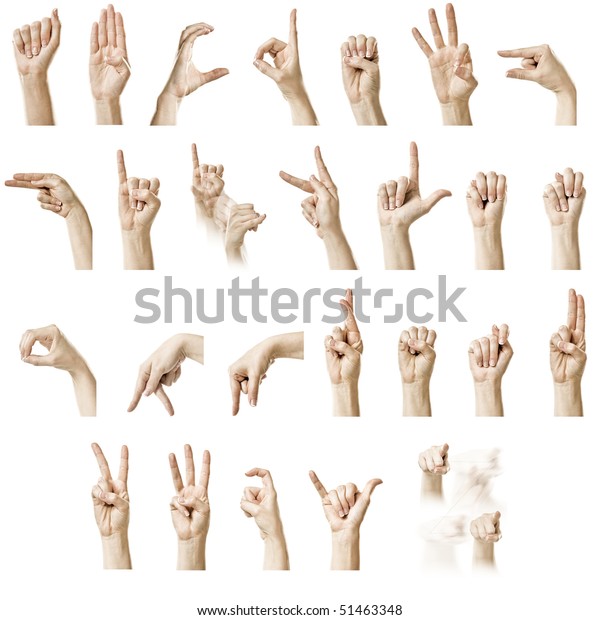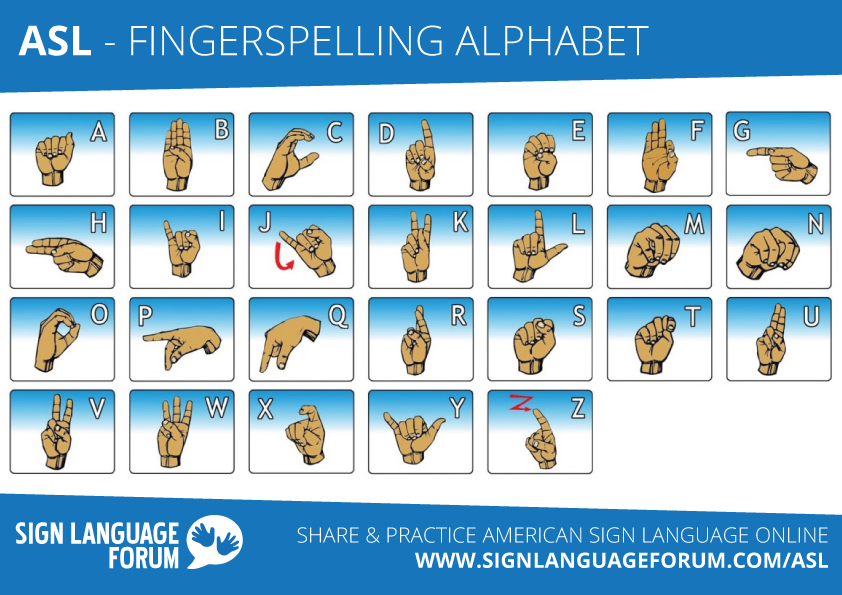

#Finger spelling alphabet banner manual#
It uses a one-handed manual alphabet of 33 signs, which make use of the 23 handshapes of USL. Ukrainian Sign Language is derived from the broad family of French Sign Languages. Variation in this language is high between age groups and religious backgrounds. The majority of people who use Mexican Sign Language reside in Mexico City, Guadalajara and Monterrey. Mexican Sign Language (‘lengua de señas mexicana’ or LSM) is different from Spanish, using different verbs and word order. Many countries that speak Spanish do not use Spanish Sign Language! (See Mexican Sign Language below, for example.) Mexican Sign Language (LSM) It is native to Spain, except Catalonia and Valencia. Spanish Sign Language is officially recognized by the Spanish Government. Data on these languages is somewhat scarce, but a few languages have been distinguished, including Levantine Arabic Sign Language. The Arab sign-language family is a family of sign languages across the Arab Mideast. The Japanese Sign Language (JSL) Syllabary is based on the Japanese alphabet, which is made up of phonetic syllables. LSF also has a pretty fascinating history.

French Sign Language (LSF)įrench Sign Language is similar to ASL – since it is in fact the origin of ASL – but there are minor differences throughout. The language has been developing since the 1950s. Probably the most-used sign language in the world (but there is currently no data to confirm this), Chinese Sign Language uses the hands to make visual representations of written Chinese characters. Unlike ASL, these alphabets use two hands, instead of one. Sharing a sign language alphabet is British Sign Language, Australian Sign Language (Auslan) and New Zealand Sign Language. Learn the ASL alphabet by demonstration in this video, or with the chart below! British, Australian and New Zealand Sign Language (BANZSL) ASL is used by roughly half a million people in the USA. This is due to the unique grammar and visual nature of the sign language.

Signs are also not expressed in the same order as words are in English. (It is, in fact, descended from Old French Sign Language.) American Sign Language was created independently and it has its own linguistic structure. Sign Language Alphabets from Around the World American Sign Language (ASL)Īlthough ASL has the same alphabet as English, ASL is not a subset of the English language. Though there are similarities between some of the different manual alphabets, each sign language has its own style and modifications, and remains unique. Some manual alphabets are one-handed, such as in ASL and French Sign Language, and others use two-hands, like BSL or Auslan. Of course, not every language uses the Latin alphabet like English, so their sign language alphabet differs as well. It’s an important tool that helps signers manually spell out names of people, places and things that don’t have an established sign.įor example, most sign languages have a specific sign for the word tree, but may not have a specific sign for oak, so o-a-k would be finger spelled to convey that specific meaning. The use of the hands to represent individual letters of a written alphabet is called ‘fingerspelling’. Most people start their sign language journey by learning the A-Z or alphabet equivalent in sign form. English for example, has three varieties: American Sign Language (ASL), British Sign Language (BSL) and Australian Sign Language (Auslan). Interestingly, most countries that share the same spoken language do not necessarily have the same sign language as each other. There are somewhere between 138 and 300 different types of sign language used around the globe today. Like spoken language, sign languages developed naturally through different groups of people interacting with each other, so there are many varieties. There is no single sign language used around the world.

People with disabilities including Autism, Apraxia of speech, Cerebral Palsy, and Down Syndrome may also find sign language beneficial for communicating.Īnd as you will see in the different languages below, it has even had other uses throughout history. It’s the main form of communication for the Deaf and Hard-of-Hearing community, but sign language can be useful for other groups of people as well. Sign language is a visual means of communicating through hand signals, gestures, facial expressions, and body language. The journey to communicating globally begins here! Let’s take a trip around the world to explore sign languages, their stories and their finger alphabets. Sign Language Alphabets From Around The World


 0 kommentar(er)
0 kommentar(er)
